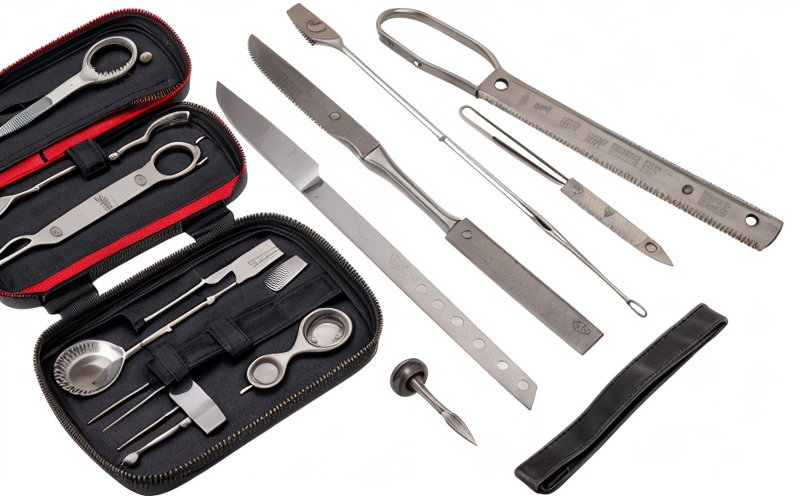Speed and Accuracy Testing of Powered Surgical Saws
The testing of powered surgical saws is a critical aspect of ensuring medical device quality, safety, and performance. In the context of modern surgery, where precision and reliability are paramount, rigorous testing can significantly impact patient outcomes.
Powered surgical saws are used in various orthopedic surgeries, spine procedures, joint replacements, and other surgical settings that require bone cutting with minimal damage to surrounding tissues. The primary goal of speed and accuracy testing is to evaluate the efficiency and precision of these devices under real-world conditions.
The testing process involves a series of controlled trials where the saw's performance is measured against established criteria. These tests are conducted using standardized specimens, typically made of bone-like materials such as polymethyl methacrylate (PMMA). The specimens are designed to mimic the properties and structure of human bone for accurate assessment.
During testing, several key parameters are monitored:
- Cutting Speed: The rate at which the saw cuts through the specimen is measured. This helps determine how quickly and efficiently the device operates.
- Cut Accuracy: The precision of the cut is evaluated by measuring the deviation from a predefined cutting path. This ensures that the saw makes clean, straight cuts as required during surgery.
- Energy Consumption: The amount of power consumed during operation is recorded to assess energy efficiency and potential operational costs.
- Vibration Levels: Vibration levels are measured to ensure that the device does not introduce excessive mechanical stress, which could affect surgical precision or patient comfort.
The testing environment is meticulously controlled to simulate real surgical conditions. This includes maintaining a consistent temperature and humidity level to prevent any environmental factors from influencing test results. The specimens are prepared according to strict protocols to ensure uniformity across tests.
Upon completion of the tests, detailed reports are generated that include all relevant data points along with visual aids such as before-and-after images of the cut specimens. These reports serve as a comprehensive reference for quality assurance and compliance purposes.
The testing process adheres to several international standards, including ISO 13485:2016, which focuses on medical device quality management systems, and EN ISO 14971:2012, which addresses the application of risk management for medical devices. These standards ensure that the tests are conducted in a manner that is both consistent with industry practices and compliant with regulatory requirements.
The results of these tests play a crucial role in the development and certification of surgical saws, ensuring that they meet the highest levels of quality and safety. By rigorously testing for speed and accuracy, manufacturers can enhance device performance and patient outcomes, ultimately contributing to safer surgical procedures worldwide.
Applied Standards
The testing of powered surgical saws is guided by several international standards that provide a framework for ensuring the quality and safety of these medical devices. The most relevant standards include:
- ISO 13485:2016 – This standard outlines the requirements for a quality management system specifically designed to ensure consistent product quality in the production, design and development of medical devices.
- EN ISO 14971:2012 – This standard provides guidance on how to apply risk management throughout the lifecycle of a medical device. It helps manufacturers identify potential risks associated with their products and implement measures to mitigate these risks.
In addition to these overarching standards, specific tests for powered surgical saws are conducted in accordance with:
- ISO 10337:2009 – This standard specifies the requirements for the design and manufacture of bone saw blades.
- ASTM F836-15e1 – This test method provides guidelines for the determination of cutting speed, accuracy, and energy consumption in powered surgical saws.
These standards ensure that all testing is conducted in a manner consistent with best practices recognized by the medical device industry. Compliance with these standards not only enhances product quality but also facilitates easier regulatory compliance for manufacturers.
Scope and Methodology
The scope of speed and accuracy testing for powered surgical saws encompasses a wide range of performance metrics that are critical to the safe and effective use of these devices in surgery. The primary focus is on evaluating the following key aspects:
- Speed: Measuring how quickly the saw cuts through bone-like materials.
- Accuracy: Ensuring that the cut follows a predefined path with minimal deviation.
- Efficiency: Assessing energy consumption and ensuring the saw operates efficiently without unnecessary power usage.
- Vibration: Monitoring levels to ensure they do not exceed safe limits, which could affect surgical precision.
The methodology for testing involves a series of controlled experiments where each parameter is meticulously measured. Specimens are prepared from bone-like materials such as PMMA and cut using the saw in question. The results are then compared against established benchmarks to determine compliance with relevant standards.
Testing is conducted under standardized conditions to ensure consistency across trials. This includes maintaining a constant temperature, humidity level, and ensuring that each specimen is prepared uniformly. The testing process is designed to replicate real surgical scenarios as closely as possible, thereby providing reliable data for quality assurance purposes.
Environmental and Sustainability Contributions
- Eco-Friendly Manufacturing: By ensuring that powered surgical saws meet stringent quality and safety standards before reaching the market, we contribute to reducing the likelihood of device failures in surgery. This reduces the need for reoperations, which can lead to increased environmental impact.
- Efficient Energy Use: The testing process helps identify energy-efficient devices, contributing to lower operational costs and reduced carbon footprint across healthcare facilities.
- Waste Minimization: By ensuring that surgical saws are precise and durable, we help minimize waste generated during surgeries, promoting a more sustainable approach to medical device usage.





